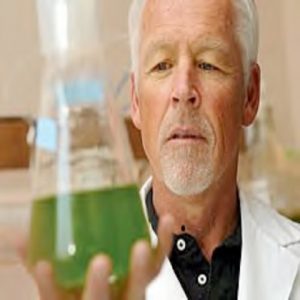May 2, 2016
 Worldwide, water security in arid regions is threatened by unsustainable use of groundwater and population growth. In order for villages, towns, and cities to be sustainable and prosperous, clean water is essential. This requires efficient treatment and reuse of wastewater.
Worldwide, water security in arid regions is threatened by unsustainable use of groundwater and population growth. In order for villages, towns, and cities to be sustainable and prosperous, clean water is essential. This requires efficient treatment and reuse of wastewater.
ASU researchers led by Peter Lammers have developed an innovative system that employs a heat-tolerant strain of microalgae in a closed system for efficient wastewater treatment under hot, arid conditions at the Arizona Center for Algae Technology and Innovation (AzCATI). The bio-solids and algal biomass are then converted into energy, such as liquid fuel, through hydrothermal liquefaction or anaerobic digestion.
Traditional methods of wastewater treatment are expensive and energy intensive. Photosynthesis-based wastewater treatment systems provide a net energy yield while removing excess nutrients and pathogens to create clean discharge water. This innovation system would also transform wastewater into a commodity by creating a revenue stream through energy extraction that promotes sustainable economic development.
As wastewater treatment technologies become more necessary for our future, we will need to find solutions that are not only sustainable but also cost-effective. With over 33 years of experience in algae research and development, Lammers has recently begun a pilot project in Gilbert that focuses on using algae for wastewater treatment. Lammers gave us further insight on the benefits of using algae for wastewater treatment, as well as an overview of his current research projects, in this November 2015 interview.

